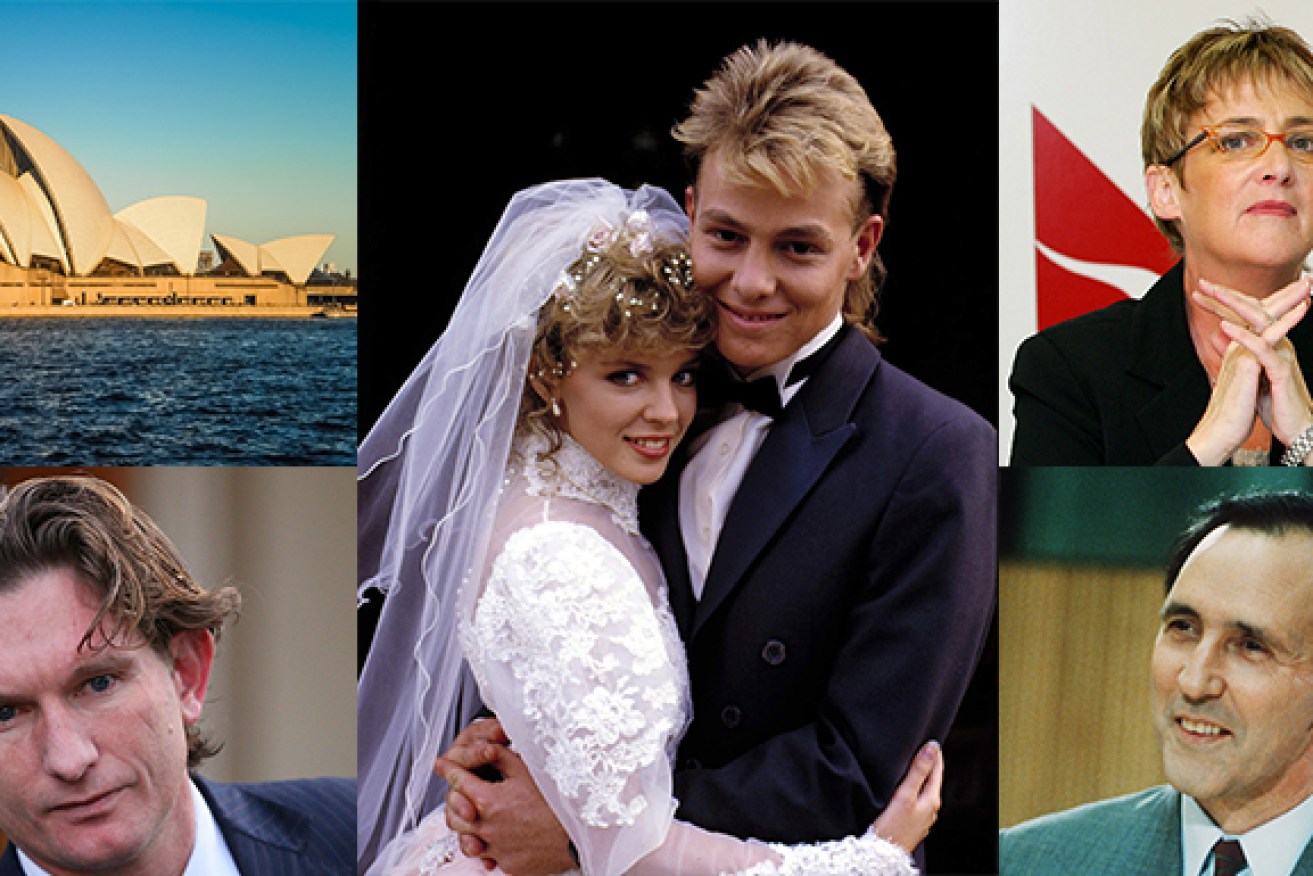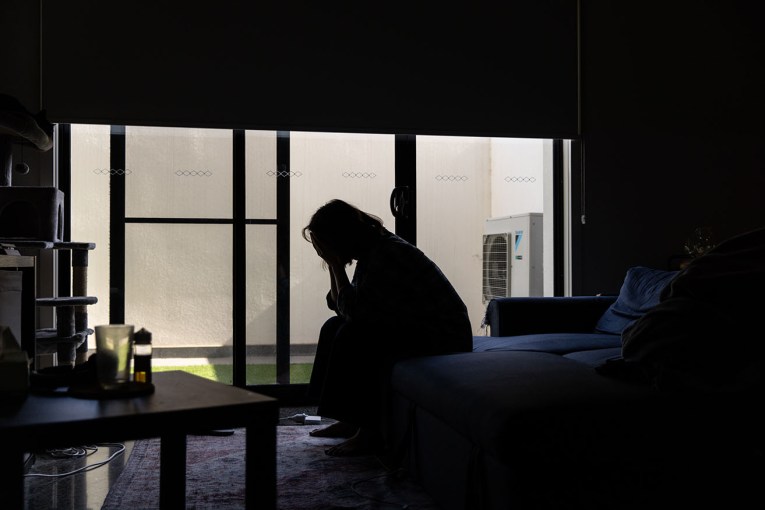‘What if’ moments that changed Australia forever


In his just released biography, The Fights of My Life, former ACTU secretary, Greg Combet, recounts how in 2006 the parliamentary Labor party opted to oust Kim Beazley as their leader, in favor of Kevin Rudd. While Rudd would go on to defeat John Howard at the following year’s federal election, Combet, who ultimately became a Minister in both the Rudd and Gillard administrations, says politics would have been very different if Labor had stuck with Beazley.
“I am convinced that Beazley would have won the 2007 election,” writes Combet. “If this had occurred, there would have been a new Labor Government with an experienced and stable leader at the helm, and recent political history would have unfolded in a very different direction.”
In political terms, it amounted to a ‘sliding doors’ moment, where what appeared to be a simple, straight-forward decision precipitated momentous events. Life abounds with such twists of fate. Here’s five more:

Qantas Airways CEO, Geoff Dixon, left, the company’s Chairwoman, Margaret Jackson, and Director of Airline Partners Australia consortium Bob Mansfield. Photo: AAP
What if the Qantas takeover had actually taken off?
A consortium of Australian and American firms tried several times in late 2006 and into 2007 to take over the national carrier, with the approval of the Qantas board.
Initially, the five firms – including Macquarie Bank – wanted to buy 100 per cent of Qantas shares and delist them from the stock exchange, converting it into a private company.
When that didn’t work, the consortium dropped its bid to 70 per cent of the company, and even applied to the Takeover Panel for extra time to win over shareholders. The Panel decided ‘no’.
But for this fluke of history, and the obstinacy of several major shareholders, the airline might not exist today, according to a senior former employee.
Then-chief economist at Qantas Dr Tony Webber told The New Daily that the global financial crisis of 2007-08 probably would have wiped out Qantas if the takeover had gone ahead.
“Not long after the bid happened, or was supposed to happen, the GFC hit and really, really smashed Qantas hard,” Dr Webber said”
Hefty loan repayments, coupled with plummeting returns, could have been fatal to the potential new owners. Yields declined by between 10 and 20 per cent, and more, on some of the airline’s routes following the crisis, according to Dr Webber.
“Thank god it didn’t happen,” was the sentiment inside the company at the end of 2008, according to Dr Webber, now an associate professor at The University of Sydney business school.
If not for the stubbornness of a few shareholders, who refused the “amazing price” on offer ($5.45 a share), the Flying Kangaroo might have been grounded forever.

Sydney Opera House. Photo: Shutterstock
What if the Finn hadn’t fought for the Dane?
“The sun didn’t know how beautiful its light was until it reflected off this building,” said architect Louis Kahn, rhapsodising about the Sydney Opera House. But the sun very nearly didn’t get the chance to kiss the soaring white-tile sails of the glorious building that now graces the point near Sydney’s Circular Quay.
Back in 1956, the NSW State Government was dragged screaming and kicking to build a cultural and performing arts centre at the end of Bennelong Point on Sydney Harbour – then Premier J.J. Cahill wanted the opera house to be built by downtown Wynyard railway station, presumably so Bennelong Point could continue to function as a tram depot.
Thankfully he lost out.
An open-ended international design competition was held in which the world’s best architects were invited to submit their vision for the building. The winning entry would win its creator 5000 pounds. The basics of the brief were that the new building had to have two performance halls – one for opera and one for symphony, a restaurant and a couple of meeting rooms “and be a good advertisement for Australia.”
Some 233 designs were submitted. Among them: one resembling Ming the Merciless’s space lair from the old Flash Gordon movie serials, another that recalled a suburban high school circa 1951 and a stodgy office block fit only for bean-counting. Yet another brought to mind a nuclear reactor. Functional and affordable, certainly. Inspired, hardly. And these were the ones that survived evaluation by judges Harry Ashworth, Cobden Parkes and Sir Leslie Martin.
At this point, a fourth judge, Finnish-American architect Eero Saarinen, arrived at the judging room late. Saarinen, the boldest of the bunch, was underwhelmed by the shortlist selected by his fellows, and plucked the 12 drawings submitted by Danish architect Joern Utzon from a pile of 30 designs that had been considered and discarded. The door slid open. “Hang on a sec … ” Saarinen might have said, and the rest is history.
In the end, thanks to Saarinen and of course Joern Utzon, Sydney is blessed with a building, as the World Heritage committee’s report reads, which is “one of the indisputable masterpieces of human creativity, not only in the 20th century but in the history of humankind.”

Paul Keating. Photo: AAP
What if The Ramrods had hit it big?
Bands far less talented than The Ramrods made it big in Australian rock ‘n roll. The Easy Beats or INXS they definitely weren’t, but they soldiered on through the weddings, parties, anything circuit in the west and south-west suburbs of Sydney in the ‘60s, pumping out cover versions of blues, Beatles’ and Everly Brothers’ songs while risking the odd original composition.
And organising their gigs and even brokering a record deal with Parlophone that saw two singles released in 1966, was the bands’ hard-working and hard-ball manager, a Bankstown boy named Paul Keating. Later, when he became Prime Minister of Australia, Keating quipped that he took the Ramrods “from nowhere to obscurity,” but it wasn’t for want of dedicated hustling that the band called it quits around 1968.
Imagine though, if fate had been kinder and the band had cracked the big-time, its members making millions and touring the world a la AC/DC, the life of their manager would have turned out rather differently than that chronicled in Paul Keating’s memoirs.
Had Keating become an Antipodean Brian Epstein or Jon Landau, his famous “big picture” would have been a Ramrods poster on a bedroom wall. Never would we have been inspired by the eloquent True Believers and Redfern speeches. On his shelves would be ARIA awards not antique French clocks, and his CD collection would be bereft of his now-beloved Mahler. We’d have missed out on the fine work he did for reconciliation, gaining a foothold in Asia, opening debate on the Republic and introducing compulsory super. (Mind you, we may never have endured the recession we “had to have” or soaring interest rates.)

James Hird. Photo: AAP
What if Essendon had chosen the other bloke?
In mid-2007 the bell finally tolled on Kevin Sheedy’s illustrious coaching career at AFL club Essendon. The former Richmond champion had turned the team from cellar-dweller to League powerhouse during an extraordinary stint that spanned almost three decades.
But that year the Bombers would miss the finals and Sheedy was shown the door. Not surprisingly, the job attracted a Melbourne Cup field of applicants. The club interviewed 20 candidates in total, eventually shortening the list to just two: former Bombers’ premiership player and Hawthorn assistant coach, Damien Hardwick, and Sheedy sidekick, Matthew Knights. It would come down to how each of the candidates performed in final interviews and presentations.
Legend has it that Hardwick’s computer failed on the day; not true, say insiders – the Hawks’ hierarchy had confiscated it, forcing him to wing it. In any event, at the end of a gruelling eight-hour session Knights got the nod. Hardwick went back to his role at Hawthorn, eventually helping Alastair Clarkson’s team win the 2008 premiership.
A year later he would win the Richmond coaching job. Knights lasted just three of a contracted five years, sacked by an impatient Essendon president, David Evans, who promptly installed his good friend and club legend, James Hird. In time, Hird would green-light the appointment of Stephen Dank to the club’s high performance team which inevitably led to the much derided “pharmacological experiment” and, ultimately, the ongoing ASADA investigation.
Essendon fans – indeed, football fans – wonder what would have happened if Hardwick, not Knights, had won the job at the end of 2007. Said one club insider this week: “Damien may or may not have had more success than Matthew, but as a favourite son of the club, it would have been a lot harder to get rid of him.”

Kylie Minogue and Jason Donovan in Neighbours. Photo: AAP
What if Ten hadn’t been so neighbourly?
For some the concept of a world without Erinsborough and the residents of Ramsey Street is an idyllic dream, yet Australian television, music and even Hollywood would all look significantly different. No Kylie, no Home & Away, no Gum Tree Mafia.
In the 1980s, the television landscape was locked up: Ten winning at 5.30pm with Perfect Match, Sale of the Century at 7pm for Nine and in between a three-way battled over the news hour. When Reg Watson of Grundy Television pitched a nightly soap opera to Nine, they declined and he took it to Seven, but from its first episode on Monday 18 March 1985 it struggled, scheduled in different time slots around the country, and it was cancelled after 170 episodes.
Watson then did the unthinkable and took the show to Ten. They snapped it up to replace M*A*S*H at 7pm across the country, with one crucial request: make the show more youth-oriented. Enter the likes of Guy Pearce, Jason Donovan and soon after Kylie Minogue. From January 1986, it was a smash, ultimately exported to more than 50 countries, and reaching 20 million viewers a night in the UK at one point. Now approaching 7,000 episodes it is Australia’s longest running drama.
The British success was crucial. Kylie had already had acting success with The Henderson Kids, and sung on Young Talent Time, but without a profile in England, mega-producers Stock Aitken Waterman would never have backed Locomotion in 1987. No singing budgie. Similarly, the musical careers of Delta Goodrem, Natalie Imbruglia, Holly Valance and Natalie Bassingthwaite have all been built on the international Neighbours brand.
At home, Seven were stung by the hammering they took from their reject and two years later commissioned Home & Away to replicate the show’s success. Had Neighbours remained a flop, Australia would never have embraced a nightly soap opera culture that became the backbone of the Australian drama industry for two decades, largely responsible for the flood of Australians to Hollywood. While Russell Crowe, with four episodes to his name, probably would have gone on to success regardless, the training Neighbours gave to the Hemsworth brothers alone would have left us without a direct link to Thor, The Hunger Games or Miley Cyrus.
If Ten never bought Neighbours, we might never have known what twerking was.
—Reporting by Larry Writer, Giles Hardie and Jackson Stiles








